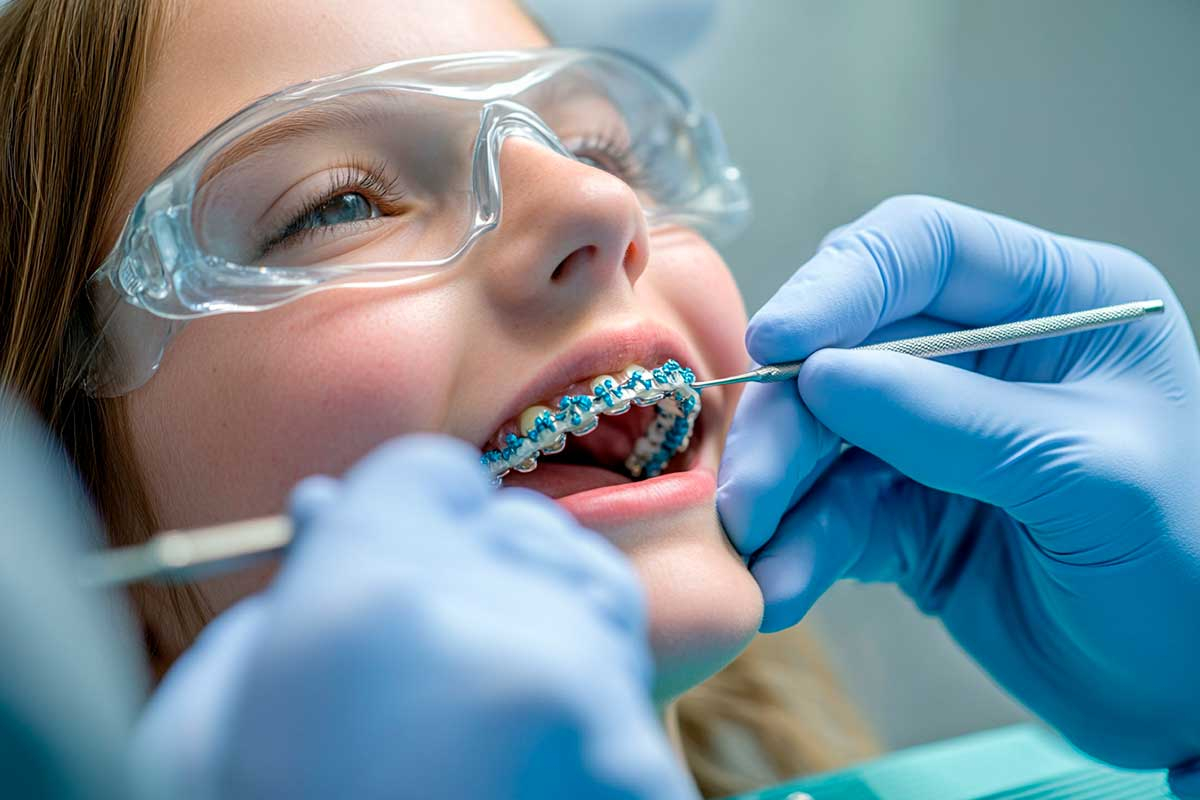
Orthodontist
An Orthodontist is a dental specialist who focuses on diagnosing, preventing, and treating dental and facial irregularities, particularly misaligned teeth and jaws. Orthodontists use a variety of treatments to correct issues such as crooked teeth, overbites, underbites, gaps between teeth, and jaw misalignment. Their goal is to improve both the function and appearance of the teeth and bite, enhancing overall oral health and aesthetics.
Orthodontists are trained to use braces, clear aligners (like Invisalign), retainers, and other devices to correct alignment issues. Their expertise ensures that patients achieve a balanced, properly aligned bite, which is essential for maintaining good oral health and preventing future complications such as tooth decay, gum disease, and jaw problems.
Specialties and Treatments Offered by Orthodontists
Braces
Braces are the most well-known orthodontic treatment, used to correct a variety of alignment issues, including crooked teeth, overcrowding, and improper bite (malocclusion). Braces consist of metal brackets that are bonded to the teeth and connected by wires. Over time, these wires apply gentle pressure to the teeth, gradually moving them into their correct positions.
Braces are highly effective and can be customized to meet the needs of each patient. While traditional metal braces are the most common, other options include ceramic braces, which are less noticeable, and lingual braces, which are placed behind the teeth. Treatment with braces usually lasts between 18 months and 3 years, depending on the complexity of the case. Regular adjustments are required to ensure progress and success in treatment.
Clear Aligners (Invisalign)
Clear aligners are a modern alternative to traditional braces. They are nearly invisible and can be removed for eating, brushing, and flossing, offering greater flexibility and convenience. Aligners, such as Invisalign, work by using a series of custom-made, clear plastic trays that gradually shift the teeth into the correct position over time. Each set of aligners is worn for about two weeks before moving to the next in the series.
Clear aligners are ideal for patients with mild to moderate alignment issues, including gaps, crowding, and minor bite problems. The treatment time with aligners varies depending on the severity of the case but typically ranges from 12 to 24 months. One of the main advantages of clear aligners is their discreet appearance, making them a popular choice for adults and teenagers who prefer not to wear traditional braces.
When to See an Orthodontist
It’s essential to see an orthodontist if you or your child experience any of the following symptoms:
- Crooked or crowded teeth: If your teeth are misaligned, it can affect both the appearance and function of your smile.
- Bite issues: Overbites, underbites, and crossbites can lead to difficulties with chewing, speaking, and even breathing.
- Jaw pain or discomfort: Misalignment of the teeth or jaws can cause pain or tension in the jaw joints, leading to more serious conditions such as temporomandibular joint disorder (TMJ).
- Gaps between teeth: Gaps can not only affect your smile’s appearance but also make teeth more prone to decay.
An orthodontist can evaluate these symptoms and recommend a treatment plan to correct the alignment of your teeth and improve your oral health.
Preventive Measures for Orthodontic Health
- Early screenings: It’s recommended that children have their first orthodontic evaluation by the age of 7 to identify any potential issues early. Early intervention can often reduce the complexity or duration of treatment later in life.
- Good oral hygiene: Keeping your teeth and gums healthy through regular brushing, flossing, and dental check-ups is essential, especially during orthodontic treatment, to prevent issues like tooth decay or gum disease.
- Wearing retainers: After orthodontic treatment, retainers are often prescribed to maintain the new position of the teeth. Wearing them as directed is crucial to prevent teeth from shifting back to their original positions.
Frequently Asked Questions (FAQ)
1. How long does orthodontic treatment take?
Treatment duration varies depending on the severity of the misalignment, but most patients wear braces or aligners for 12 to 36 months. Regular check-ups are needed to monitor progress.
2. Is orthodontic treatment only for children?
No, orthodontic treatment is effective for both children and adults. While it’s common to start treatment during adolescence, many adults seek orthodontic care to improve their smile and bite.
3. Can I eat normally with braces or aligners?
With braces, it’s important to avoid hard, sticky, or crunchy foods that could damage the brackets and wires. Clear aligners can be removed during meals, allowing for greater flexibility in your diet.
Orthodontic Services at Clinic Consultation
At Clinic Consultation, our experienced orthodontists provide a wide range of treatments to correct dental misalignment and enhance your smile. Whether you need traditional braces or are considering clear aligners like Invisalign, we offer personalized care to meet your specific needs.
Book an appointment today to schedule a consultation with an orthodontist at Clinic Consultation and begin your journey to a healthier, more confident smile.
Click the button below to schedule your appointment online.